Lesson 8: PSpice Exports and Outputs
This walk-through will show how to export data from the plot window and schematic in OrCAD PSpice Designer 22.1. After you complete this topic, you will be able to:
- Copy and paste a waveform into a text document
- Export a CSV from the plot window
- Export a Smart PDF
To follow along, continue with the design from the previous topic or use the provided materials.
If materials were not downloaded at the beginning of the walk-through, files for this lesson can be accessed through the materials tab above.
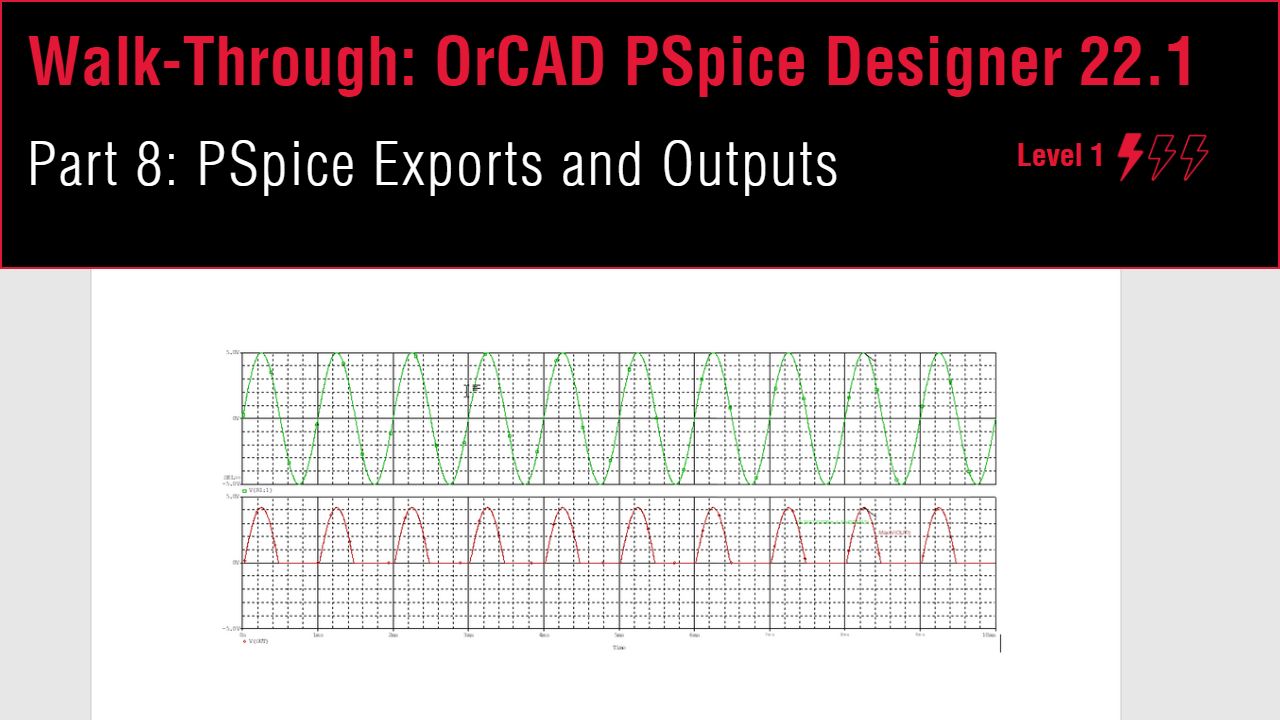 Open in New Window
Open in New Window
Copying a Plot
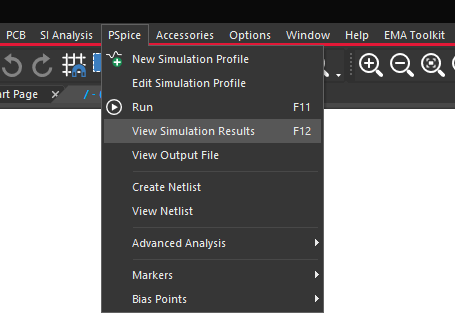
Note: If you closed the simulation results from the last walk-through, select PSpice > View Simulation Results from the menu to view the results without having to re-run the simulation.
Step 1: Select Window > Copy to Clipboard from the menu.
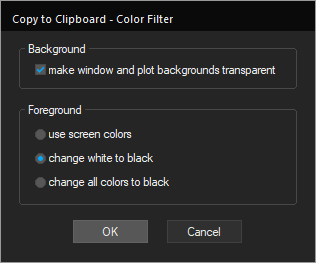
Step 2: The Color Filter window opens. Leave the settings as the default and click OK.
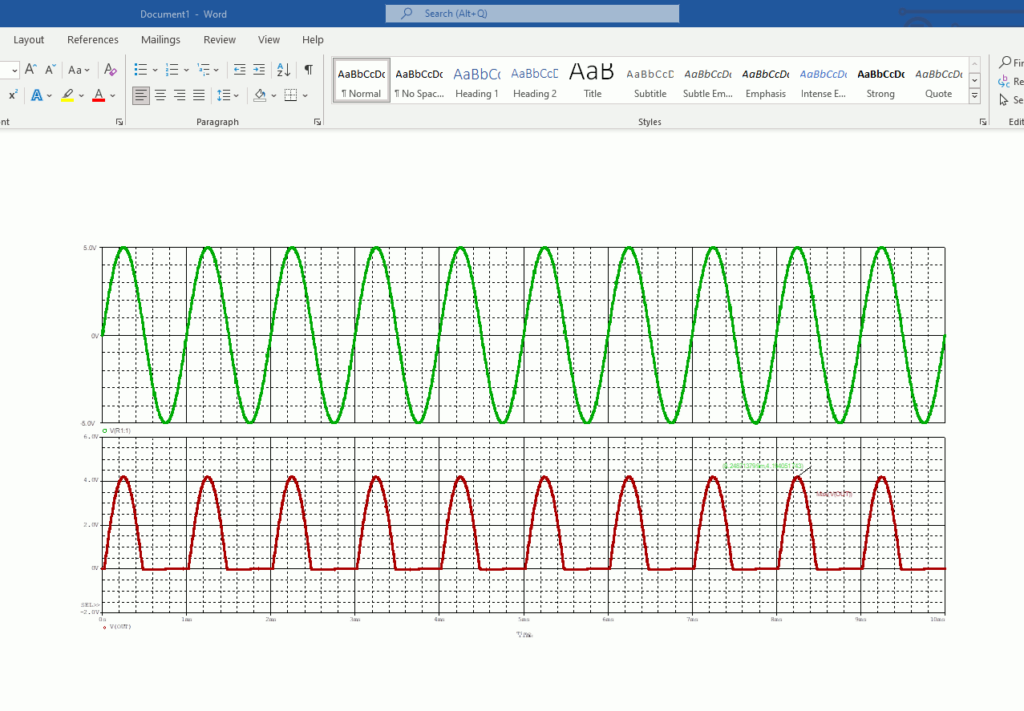
Step 3: Open a blank document in Microsoft Word. Press CTRL-V to paste the plot.
Note: Copying a waveform plot allows you to easily communicate and share graphical results.
Generating a CSV File
Note: The numerical values in a waveform can be saved in a spreadsheet format.
Step 4: Select File > Export > Comma Separated File.
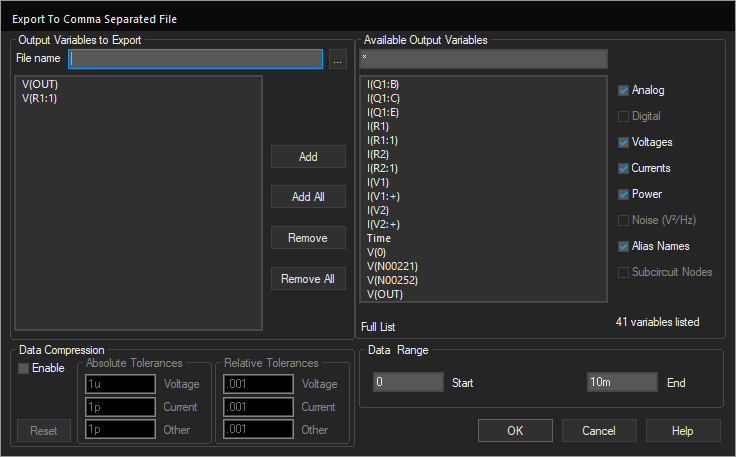
Step 5: The Export to Comma Separated File window opens. The variables to export are already selected based on what is plotted.
Note: Additional variables can be added to the list by selecting them from the Available Output Variables list and clicking Add. Variables can be removed by selecting the variable and clicking Remove.
Step 6: Select the ellipsis for the File Name. Browse for a location to save the file. Enter a file name and click OK.
Step 7: Click OK to generate the CSV file.
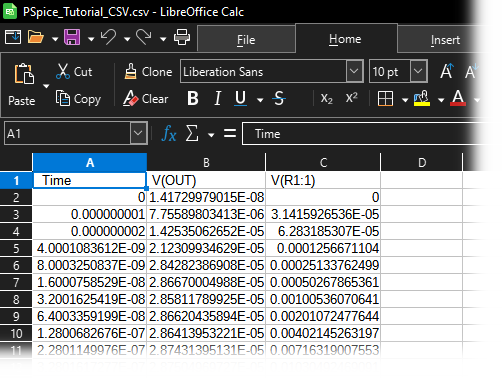
Step 8: Open the CSV file in a spreadsheet viewer such as LibreOffice Calc or Microsoft Excel. The input and output voltage waveforms are plotted numerically.
Configuring a Smart PDF
Note: A Smart PDF is a PDF of the design which includes a hierarchy that can be navigated through without losing the design IP.
Step 9: Close the simulation plot window.
Step 10: Select the design file in the Project Hierarchy.
Step 11: Select File > Export > PDF from the menu.
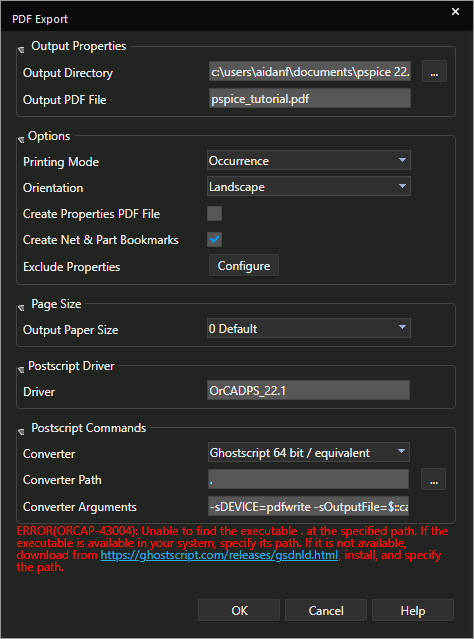
Step 12: If this is your first time generating a Smart PDF, red text will be visible. Click the link to open the download window.
Note: If the green text gswin64c.exe is available is visible, skip to Exporting the Smart PDF.
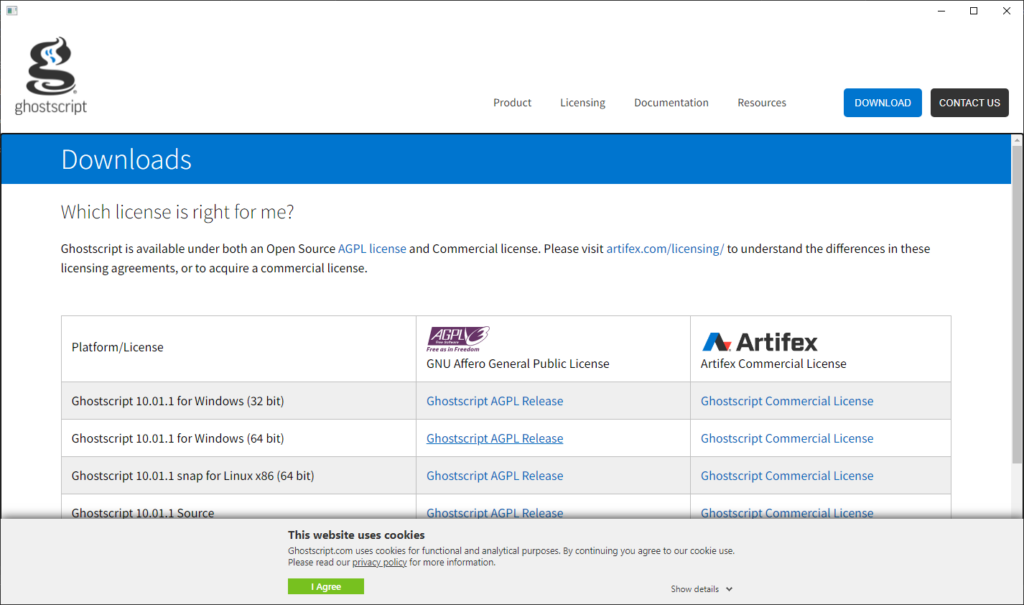
Step 13: Select the appropriate link to download GhostScript.
Step 14: The file browser opens. Browse to a location to save the installer.
Step 15: Run the installer and follow the on-screen prompts to install GhostScript.
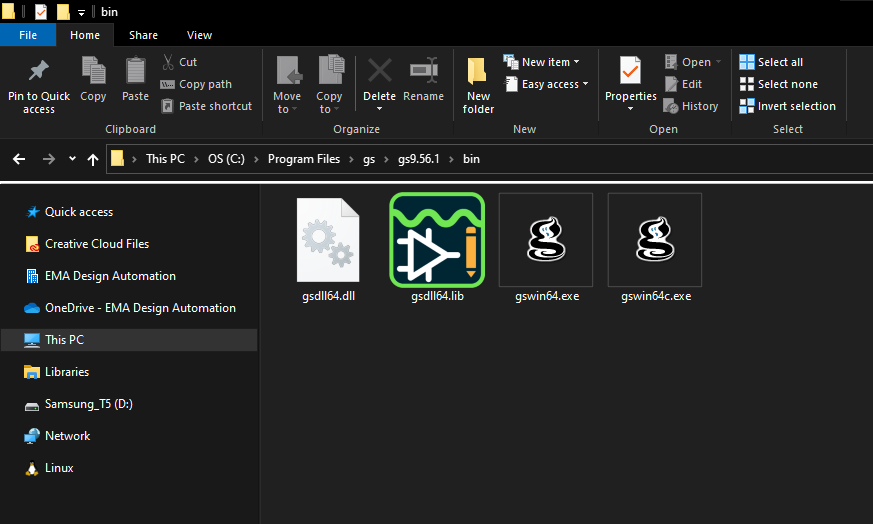
Step 16: Open File Explorer and browse to C:\Program Files\gs\[gs_version]\bin.
Step 17: Select the file path and press CTRL-C on the keyboard to copy.
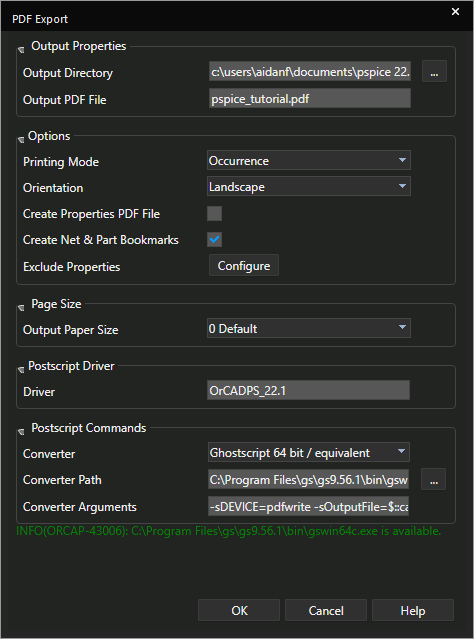
Step 18: Back in Capture, paste the file path into Converter Path.
Step 19: Enter \gswin64c.exe at the end to define the executable path. GhostScript has been configured and the Smart PDF can be generated.
Note: The text at the bottom of the Smart PDF export window turns green when configuration is completed correctly.
Exporting the Smart PDF
Step 20: Under Output Properties, select the ellipsis for Output Directory.
Step 21: The File Browser opens. Browse to a location to save the file and click Select Folder.
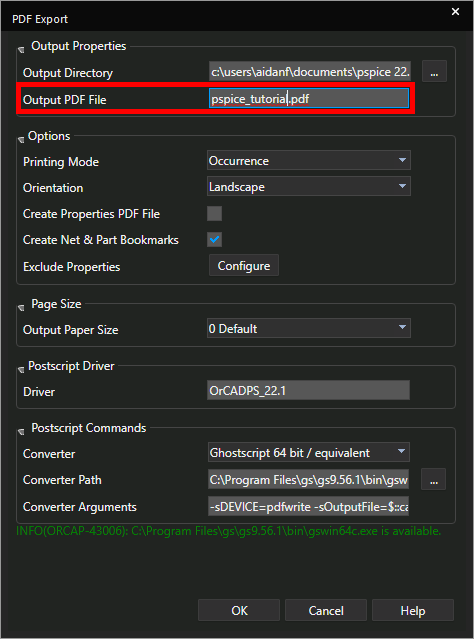
Step 22: Enter a name for the file into the Output PDF File field.
Step 23: Click OK to generate the Smart PDF. The PDF opens automatically in the default PDF viewer.
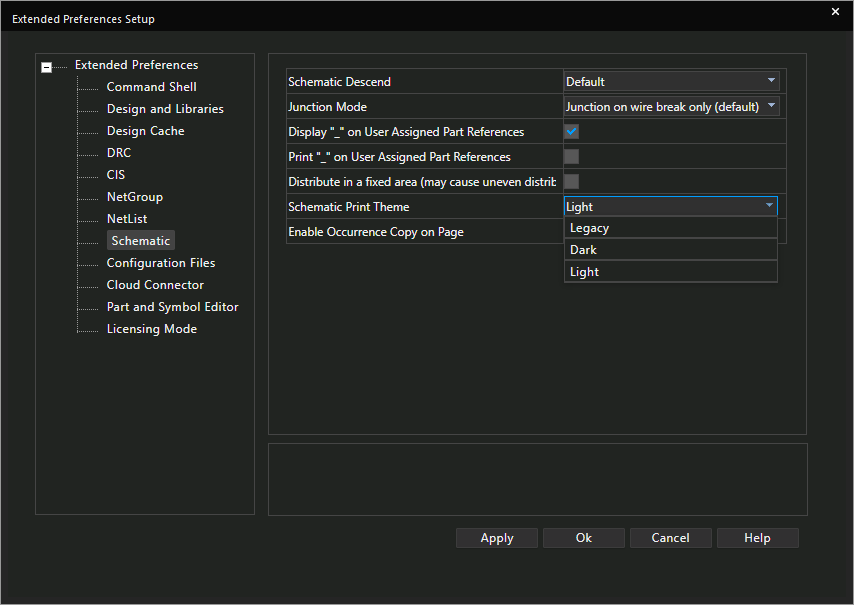
Note: By default, the schematic canvas will print in light mode despite your canvas settings. The PDF can be changed to print in dark mode or legacy mode by selecting Options > Extended Preferences from the menu. Select Schematic and change the schematic print theme to the desired settings.
Navigating the PDF
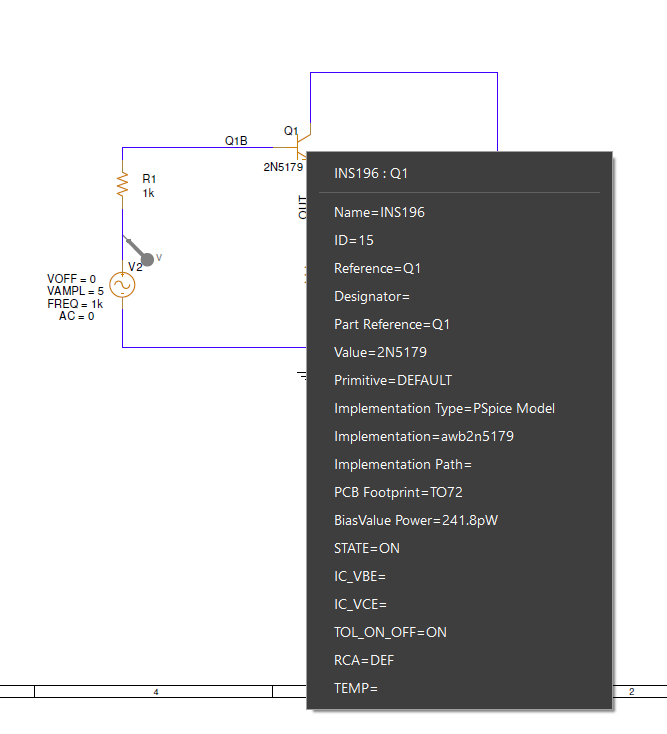
Step 24: Select a part to view its information, such as PCB footprint, reference designator, and more.
Step 25: Open the Bookmarks panel.
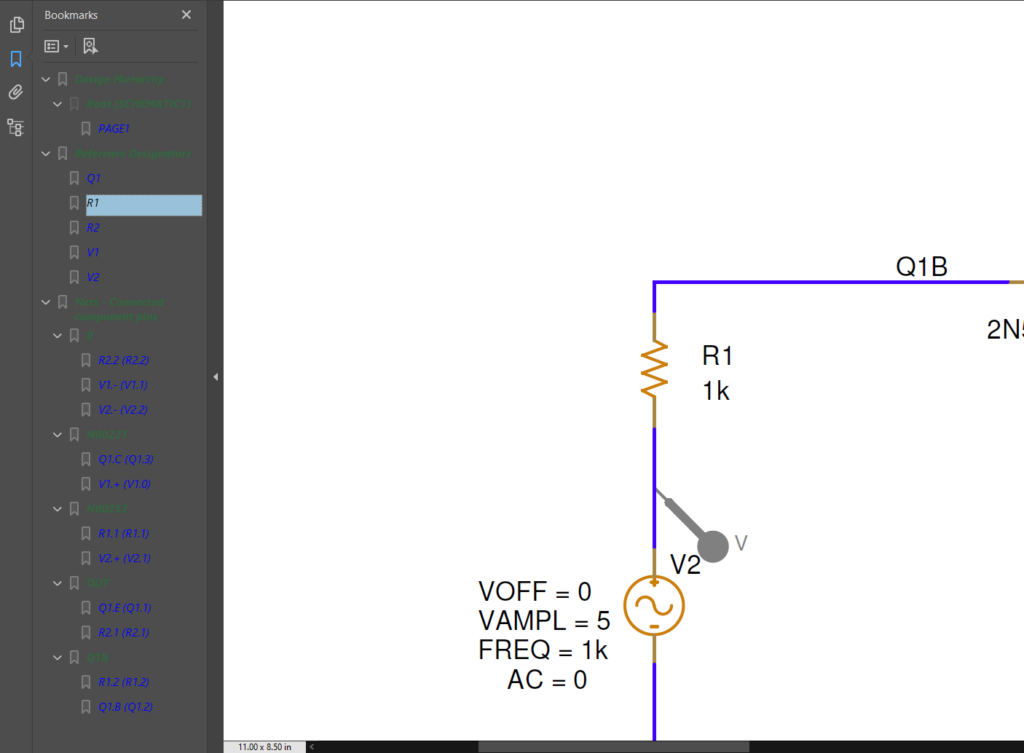
Step 26: Select a reference designator bookmark. The PDF will zoom into that part.
Note: The same can be done for pins and nets.